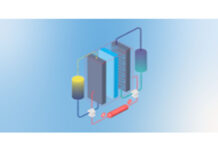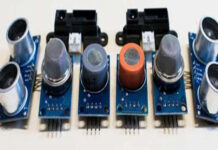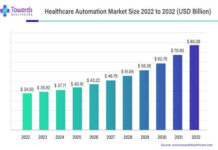The global demand for robotic process automation market is expected to reach $3.2 billion by 2023. Forecasts anticipate that by the end of 2033, this sum will have risen to $26.5 billion in revenue.
The surge in investments in automation research and development, alongside the growing availability of technologies like RPA OCR tools and automated robots, is poised to solidify the demand for RPA services worldwide. As the forecast period concludes, sales of RPA monitoring tools tailored for cybersecurity, risk management, and compliance management are anticipated to experience a significant upswing.
The increasing digitization of daily life is expected to drive the demand for Robotic Process Automation (RPA) in the future. Integration of self-learning technologies like AI, machine vision, and ML across industries will further boost demand for intelligent process automation. The rise of virtual assistants, advanced chatbots, and adoption of automation technologies by businesses for productivity enhancement are key drivers. Additionally, adherence to industry 4.0 standards and AI adoption in retail will propel RPA software sales.
However, high initial investments and the need for skilled personnel may hinder RPA demand. Challenges such as a shortage of skilled professionals and complexities in implementing intelligent process automation technologies need addressing for sustained growth. Despite obstacles, investments in R&D and the availability of RPA OCR tools will solidify demand. Sales of RPA monitoring tools for cybersecurity and risk management are expected to witness substantial growth.
Market Drivers:
Several factors propel the growth of the Robotic Process Automation (RPA) market:
- Cost Efficiency: RPA technology streamlines repetitive and time-consuming tasks, leading to substantial cost savings for organizations. By automating these tasks, companies can reduce reliance on manual labor, enhancing operational efficiency and generating cost reductions.
- Enhanced Efficiency: RPA executes tasks faster and with greater accuracy than humans, boosting overall efficiency and productivity. This capability enables companies to expedite task completion, minimize errors, and increase throughput.
- Improved Customer Experience: RPA facilitates quicker and more precise responses to customer inquiries and requests, elevating the overall customer experience. Enhanced responsiveness contributes to heightened customer satisfaction and retention rates.
- Simplified Business Processes: RPA simplifies complex business processes by automating repetitive and manual tasks. This simplification streamlines operations, reduces errors, and enhances compliance adherence for businesses.
- Scalability: RPA solutions are easily scalable to accommodate organizations of all sizes, ranging from small businesses to large enterprises. This scalability makes RPA an appealing option for businesses seeking to automate their processes.
- Seamless Integration: RPA seamlessly integrates with other technologies such as artificial intelligence (AI) and machine learning (ML), further enhancing operational efficiency and productivity. This integration enables businesses to leverage advanced capabilities for improved outcomes.
Key Market Trends:
The RPA market has experienced remarkable growth in recent years, driven by widespread adoption of automation technologies across diverse industries. Organizations are increasingly turning to RPA to automate routine tasks, leading to heightened efficiency, accuracy, and productivity.
Intelligent automation has emerged as a prominent trend within the RPA market, fueled by advancements in artificial intelligence and machine learning. This approach combines RPA with AI and ML, empowering machines to learn from data and make intelligent decisions.
Cloud-based RPA solutions are gaining traction due to their flexibility, scalability, and cost-effectiveness. These solutions offer convenient access to data and analytics, empowering organizations to make well-informed decisions.
Hyper automation, which integrates various automation technologies including RPA, AI, ML, and cognitive tools, is witnessing widespread adoption. This comprehensive approach enables end-to-end automation of business processes, leading to enhanced efficiency, agility, and customer satisfaction.
The healthcare sector is swiftly embracing automation technologies like RPA to bolster operational efficiency, curb costs, and elevate patient care standards. RPA applications span areas such as claims processing, medical coding, and patient data management.
In the realm of customer experience enhancement, companies are leveraging RPA to automate customer support processes such as chatbots and virtual assistants. This adoption enables swift and efficient customer support, thereby enhancing overall customer satisfaction levels.
Competitive Landscape:
To solidify their market, share sustainably, leading companies are directing their efforts towards the expansion of novel automation technologies and services.
As an example, in September 2022, Newgen Software unveiled its latest integrated RPA solution. Additionally, the company has reinforced its automation processes to bolster its capabilities in automation and development.
Key Companies Profiled:
- UiPath
- Automation Anywhere Inc.
- Redwood Software
- NICE
- Blue Prism
- Pegasystems
- Kofax
- KOFAX
- NTT Advanced Technology Corporation
- Genpact Ltd.
- WorkFusion
- EdgeVerve
- IPsoft Inc.















